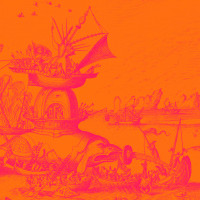GRIEF
Introduction
This special issue has invited scholars to reflect upon the theme of »grief« in the format of an audio paper. This format, we thought, would offer authors a possibility to present their research in sound, in a way that gives the theme of grief the opportunity to be heard firsthand, not only described in text.
We, the editors, must admit that we prepared ourselves before listening to the audio manuscripts sent to us. Like most people, we often find comfort in, but also experience grief through sound and music. Whether a pop-music tune, an abstract contemporary music piece, ritual singing, a specific soundscape or the physical loudness of a concert, affect, memory and the duration of sound and music often have had an impact on our mental state.
This preparation turned out to be a false alarm. Regardless of the affective resonances of the works the emphasis and point of departure most definitely in the four pieces published here was on the research of grief, not an individual and sole representation of an affective phenomena. The griefs we’ll meet and learn about in this special issue are ones that are shared among families, relatives and even nations, and they are ones that are reflected, edited, staged and performed. This does not make them less legitimate or consistent, and indeed they do contribute with insights that are of relevance to more than the individual experience. All this probably comes as no surprise for people who do research on negative affects and emotions, but for us there was precaution.
The reasons for grieving today are many. The call-for-papers for this issue mentioned war, disease, social injustice and the climate crisis as sources from which in both public and private lives grievances currently stem from. Paired with pain, sadness, remorse, anger and loss, all the aggravating affects and movements of the soul, grief can manifest in various kinds of sonic expressions. In different cultural contexts expressions of grief can be heard as cries, wails, sobs and mourning, or chiming of bells. Musical genres evolving around grief and sadness are plenty. There are nevertheless various sonic manifestations of grief that are not musical nor performed.
According to the four audio papers selected for this issue, the aesthetics and ethics of grief can swirl around communication in crisis, family grief and shame mingled with popular music, and reviving ancient rituals of mourning, namely lamenting.
Communications scholars’ Milena Droumeva’s and Svitlana Matviyenko’s paper, Sonic Worlds Collide – Sounds from Ukraine, is an attempt to reflect on the dynamics of long-distance communication at a time of crisis, and the ethics of recording and exchanging audio as a way of connecting at times contrasting material realities, interrogating the autoethnographic in soundscapes by engaging with the narratological nature of field recordings in their ability to convey not only affect but also memory, history, and context.
Artist and transdiciplinary practitioner leon clowes’s paper Secrets keep us sick, but pop music brings us closer, is a performative autoethnography interrogating their family’s lived grief, contemplating on how societal shaming affects and dislocates mental health, and how popular music can provide reparative queer identification and posthumous emotional connection.
Both the papers of Viliina Silvonen and Emmi Kuittinen, and Elina Hytönen-Ng and Emilia Kallonen tackle voiced mourning rituals – the traditional Karelian and Ingrian as well as contemporary Finnish itku – used as archaic methods to seek relief from grief and loss, and have traditionally been part of women’s social duties in rites of passage. These collective forms of grieving have also found space in the contemporary world, as shown in both audio papers here.
The paper by ethnomusicologist Elina Hytönen-Ng and folk singer Emilia Kallonen, Lament is like a safe lap – Lamenting circle’s meaning for the participants, describes us a guided lamenting circle arguing that the circle acts as a substitute community, reminiscent of the traditional village communities now largely missing in contemporary Finland.
The second paper on lamenting, Creating grief and lamenting on stage: a case study of lamenter's emotions in the context of performing arts in contemporary Finland, by folklorist Viliina Silvonen and folk singer and musician Emmi Kuittinen, demonstrate how the ritual traditions of lamenting have sprouted into various new practices. In their paper they ask how emotions arise and are formed in these new performance practices, and what the emotions of contemporary laments are in the contexts of music and performing arts in Finland. The paper holds in itself an example lament about Russia’s war of aggression in Ukraine showing that besides grief compassion is a strong emotion in contemporary laments.
Hopefully this collection will provide some sensations on the myriad experiences and cultural expressions of grief.
All audio papers have been peer reviewed by two external anonymous reviewers and edited before publication. They were carefully selected among nine submissions.
Proofreading: Sébastien Doubinsky
Mastering of audio papers: Simon Erdmann



